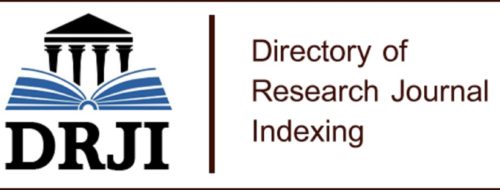Öz
Birinci Dünya Savaşı’nın ardından,
savaşın nasıl önlenebileceği konusuna odaklanan liberal Uİ teorisi İkinci Dünya
Savaşı’ndan sonra ifadesini Barış Çalışmaları’nda bulacaktır. Barış Çalışmaları
savaşları önlemek için devletlerarası ilişkiler düzeyinde araştırmalar yapmak
yerine savaşların patlak vermesine zemin hazırlayan toplumsal zihniyet ve
altyapıya yönelmeyi tercih etmiştir. Soğuk Savaş sonrası dönemin önemli
fikirlerinden demokratik barış teorisi de tıpkı Barış Çalışmaları gibi normatif
değerlerin önemine atıfta bulunmakta ve uluslararası savaşların patlak
vermesini önlemek için barış şartlarının yapısal olarak inşa edilmesi gerektiği
düşüncesini öne sürmektedir. Bu anlamda demokratik barış vizyonunun liberal Uİ
teorisi ve Barış Çalışmaları ile arasında doğrudan bir devamlılık ilişkisi söz
konusudur.
Anahtar Kelimeler
Barış Çalışmaları Ebedi Barış Liberalizm Pozitif Barış Demokratik Barış Teorisi
Kaynakça
- ARI, Tayyar; (2002), Uluslararası İlişkiler Teorileri: Çatışma, Hegemonya, İşbirliği, İstanbul: Alfa Yayınları.
- BALCI, Fatih; (2011), “Do Democracies Promote Peace in the Light of Democratic Peace Theory”, International Journal of Human Sciences, 8(1), pp. 728-739.
- BÜYÜKBAŞ, Hakkı ve Nilgün ATICI; (2012), “Liberal Demokratik Barış Kuramı: Eleştirel Bir Değerlendirme”, Erciyes Üniversitesi İktisadi ve İdari Bilimler Fakültesi Dergisi, 40, ss. 1-19.
- DOYLE, Michael W.; (1983a), “Kant, Liberal Legacies and Foreign Affairs”, Philosophy and Public Affairs, 12(3), pp. 205-235.
- DOYLE, Michael W.; (1983b), “Kant, Liberal Legacies and Foreign Affairs: Part 2”, Philosophy and Public Affairs, 12(4), pp. 323-353.
- DOYLE, Michael W.; (1986), “Liberalism and World Politics”, American Political Science Review, 80(4), pp. 1151-1169.
- ELMAN, Colin; (2001), “Introduction: History, Theory and the Democratic Peace”, The International History Review, 23(4), pp. 757-766.
- GALTUNG, Johan; (2003), Peace by Peaceful Means: Peace and Conflict, Development and Civilization, Londra: Sage Publications.
- GALTUNG, Johan; (2010), “Peace Studies and Conflict Resolution: The Need for Transdisciplinarity”, Transcultural Psychiatry, 47(1), pp. 20-32.
- GEIS, Anna, Lothar BROCKI and Harald MÜLLER; (2007), “From Democratic Peace to Democratic War?”, Peace Review, 19(2), pp. 157-163.
- GOLDSTEIN, Joshua S.; (2001), International Relations, New York: Longman Publishers.
- HINSLEY, Francis H.; (1987), “Peace and War in Modern Times”, in Raimo Vayrynen (Ed.), The Quest for Peace, Londra: Sage Publications, pp. 63-79.
- JACKSON, Robert ve Georg SORENSEN; (2003), Introduction to International Relations: Theories and Approaches, New York: Oxford University Press.
- KANT, Immanuel; (1983), Perpetual Peace and Other Essays, Indianapolis: Hackett Publishing Company.
- KIM, Kwang-Jin and Patrick JAMES; (2010), “Learning from the Great War? The Origin of Democratic Peace”, Defence and Peace Economics, 21(5-6), pp. 487-505.
- LAYNE, Christopher; (1994), “Kant or Cant: The Myth of the Democratic Peace”, International Security, 19(2), pp. 5-49.
- LENHARD, Johannes; (2010), Kant and the Liberal Democratic Peace Theory: The Cases of Kosovo, Iraq, and Afghanistan, Münih: Grin Publishing.
- LEVY, Jack S.; (1989), “The Causes of War: A Review of Theories and Evidence”, in Philip E. Tetlock, Jo L. Husbands, Robert Jervis, Paul C. Stern ve Charles Tilly (Ed.), Behavior, Society and Nuclear War, New York: Oxford University Press, pp. 209-313.
- LEVY, Jack S.; (2006), “War and Peace”, in Walter Carlsnaes, Thomas RISSE ve Beth A. SIMMONS (Ed.), Handbook of International Relations, Londra: Sage Publications, pp. 350-368.
- MANSFIELD, Edward D. ve Jack SNYDER; (1996), “Democratization and the Danger of War”, in Michael E. Brown, Sean M. LYNN-JONES ve Steven E. MILLER (Ed.), Debating the Democratic Peace, Massachusetts: The MIT Press, pp. 301-334.
- MEARSHEIMER, John J.; (1990), “Back to the Future: Instability in Europe after the Cold War, International Security, 15(1), pp. 5-56.
- OREN, Ido; (1996), “The Subjectivity of the ‘Democratic’ Peace: Changing U.S. Perceptions of Imperial Germany”, in Michael E. Brown, Sean M. Lynn-Jones ve Steven E. Miller (Ed.), Debating the Democratic Peace, Massachusetts: The MIT Press, pp. 263-300.
- PATSIAOURAS, Konstantionos; (2009), Democratic Peace Theory and Greek-Turkish Relations in the Context of the European Union, Monterey: Dudley Knox Library.
- RAPOPORT, Anatol; (1992), Peace: An Idea Whose Time Has Come, Ann Arbor: The University of Michigan Press.
- RASLER, Karen ve William R. THOMPSON; (2005), Puzzles of the Democratic Peace: Theory, Geopolitics, and the Transformation of World Politics, New York: Palgrave Macmillan.
- RAY, James Lee; (1995), Democracy and International Conflict: An Evaluation of the Democratic Peace Proposition, Columbia: University of South Carolina Press.
- RENOUVIN, Pierre ve Jean-Baptiste DUROSELLE; (1968), Introduction to the History of International Relations, Oxford: Pall Mall Press.
- RUSSETT, Bruce; (1993), Grasping the Democratic Peace: Principles for a Post-Cold War World, Princeton: Princeton University Press.
- SCHWARTZ, Thomas and Kiron K. SKINNER; (2002), “The Myth of Democratic Peace”, Orbis, 46(1), pp. 159-172.
- SHARP, Gene; (2002), From Dictatorship to Democracy: A Conceptual Framework for Liberation, Boston: The Albert Einstein Foundation.
- SMALL, Melvin and J. David SINGER; (1976), “The War Proneness of Democratic Regimes, 1816-1965”, Jerusalem Journal of International Relations, 4, pp. 50-69.
- SÖNMEZOĞLU, Faruk; Hakan GÜNEŞ ve Erhan KELEŞOĞLU; (2013), Uluslararası İlişkilere Giriş, İstanbul: Der Yayınları.
- SPIRO, David E.; (1996), “The Insignificance of the Liberal Peace”, in Michael E. BROWN; Sean M. LYNN-JONES and Steven E. MILLER (Ed.), Debating the Democratic Peace, Massachusetts: The MIT Press, pp. 202-238.
- STEINBERG, Gerald M.; (2007), “Postcolonial Theory and the Ideology of Peace Studies”, Israel Affairs, 13(4), pp. 786-796.
Öz
Liberal IR theory that had focused to
the aim of preventing wars after the World War I, would manifest itself in
Peace Studies following the World War II. In order to avoid war, Peace Studies
tends to incline social mentality and substructure which pave the way for the
wars, instead of making research at the level of interstate relations.
Democratic peace theory as one of crucial ideas of the post-Cold War era also
refers to the importance of normative values just as Peace Studies and
indicates necessity to build structural conditions of peace to prevent
international wars. In this respect, it has an obvious relationship of
continuity with liberal IR theory and Peace Studies.
Anahtar Kelimeler
Peace Studies Perpetual Peace Liberalism Positive Peace Democratic Peace Theory
Kaynakça
- ARI, Tayyar; (2002), Uluslararası İlişkiler Teorileri: Çatışma, Hegemonya, İşbirliği, İstanbul: Alfa Yayınları.
- BALCI, Fatih; (2011), “Do Democracies Promote Peace in the Light of Democratic Peace Theory”, International Journal of Human Sciences, 8(1), pp. 728-739.
- BÜYÜKBAŞ, Hakkı ve Nilgün ATICI; (2012), “Liberal Demokratik Barış Kuramı: Eleştirel Bir Değerlendirme”, Erciyes Üniversitesi İktisadi ve İdari Bilimler Fakültesi Dergisi, 40, ss. 1-19.
- DOYLE, Michael W.; (1983a), “Kant, Liberal Legacies and Foreign Affairs”, Philosophy and Public Affairs, 12(3), pp. 205-235.
- DOYLE, Michael W.; (1983b), “Kant, Liberal Legacies and Foreign Affairs: Part 2”, Philosophy and Public Affairs, 12(4), pp. 323-353.
- DOYLE, Michael W.; (1986), “Liberalism and World Politics”, American Political Science Review, 80(4), pp. 1151-1169.
- ELMAN, Colin; (2001), “Introduction: History, Theory and the Democratic Peace”, The International History Review, 23(4), pp. 757-766.
- GALTUNG, Johan; (2003), Peace by Peaceful Means: Peace and Conflict, Development and Civilization, Londra: Sage Publications.
- GALTUNG, Johan; (2010), “Peace Studies and Conflict Resolution: The Need for Transdisciplinarity”, Transcultural Psychiatry, 47(1), pp. 20-32.
- GEIS, Anna, Lothar BROCKI and Harald MÜLLER; (2007), “From Democratic Peace to Democratic War?”, Peace Review, 19(2), pp. 157-163.
- GOLDSTEIN, Joshua S.; (2001), International Relations, New York: Longman Publishers.
- HINSLEY, Francis H.; (1987), “Peace and War in Modern Times”, in Raimo Vayrynen (Ed.), The Quest for Peace, Londra: Sage Publications, pp. 63-79.
- JACKSON, Robert ve Georg SORENSEN; (2003), Introduction to International Relations: Theories and Approaches, New York: Oxford University Press.
- KANT, Immanuel; (1983), Perpetual Peace and Other Essays, Indianapolis: Hackett Publishing Company.
- KIM, Kwang-Jin and Patrick JAMES; (2010), “Learning from the Great War? The Origin of Democratic Peace”, Defence and Peace Economics, 21(5-6), pp. 487-505.
- LAYNE, Christopher; (1994), “Kant or Cant: The Myth of the Democratic Peace”, International Security, 19(2), pp. 5-49.
- LENHARD, Johannes; (2010), Kant and the Liberal Democratic Peace Theory: The Cases of Kosovo, Iraq, and Afghanistan, Münih: Grin Publishing.
- LEVY, Jack S.; (1989), “The Causes of War: A Review of Theories and Evidence”, in Philip E. Tetlock, Jo L. Husbands, Robert Jervis, Paul C. Stern ve Charles Tilly (Ed.), Behavior, Society and Nuclear War, New York: Oxford University Press, pp. 209-313.
- LEVY, Jack S.; (2006), “War and Peace”, in Walter Carlsnaes, Thomas RISSE ve Beth A. SIMMONS (Ed.), Handbook of International Relations, Londra: Sage Publications, pp. 350-368.
- MANSFIELD, Edward D. ve Jack SNYDER; (1996), “Democratization and the Danger of War”, in Michael E. Brown, Sean M. LYNN-JONES ve Steven E. MILLER (Ed.), Debating the Democratic Peace, Massachusetts: The MIT Press, pp. 301-334.
- MEARSHEIMER, John J.; (1990), “Back to the Future: Instability in Europe after the Cold War, International Security, 15(1), pp. 5-56.
- OREN, Ido; (1996), “The Subjectivity of the ‘Democratic’ Peace: Changing U.S. Perceptions of Imperial Germany”, in Michael E. Brown, Sean M. Lynn-Jones ve Steven E. Miller (Ed.), Debating the Democratic Peace, Massachusetts: The MIT Press, pp. 263-300.
- PATSIAOURAS, Konstantionos; (2009), Democratic Peace Theory and Greek-Turkish Relations in the Context of the European Union, Monterey: Dudley Knox Library.
- RAPOPORT, Anatol; (1992), Peace: An Idea Whose Time Has Come, Ann Arbor: The University of Michigan Press.
- RASLER, Karen ve William R. THOMPSON; (2005), Puzzles of the Democratic Peace: Theory, Geopolitics, and the Transformation of World Politics, New York: Palgrave Macmillan.
- RAY, James Lee; (1995), Democracy and International Conflict: An Evaluation of the Democratic Peace Proposition, Columbia: University of South Carolina Press.
- RENOUVIN, Pierre ve Jean-Baptiste DUROSELLE; (1968), Introduction to the History of International Relations, Oxford: Pall Mall Press.
- RUSSETT, Bruce; (1993), Grasping the Democratic Peace: Principles for a Post-Cold War World, Princeton: Princeton University Press.
- SCHWARTZ, Thomas and Kiron K. SKINNER; (2002), “The Myth of Democratic Peace”, Orbis, 46(1), pp. 159-172.
- SHARP, Gene; (2002), From Dictatorship to Democracy: A Conceptual Framework for Liberation, Boston: The Albert Einstein Foundation.
- SMALL, Melvin and J. David SINGER; (1976), “The War Proneness of Democratic Regimes, 1816-1965”, Jerusalem Journal of International Relations, 4, pp. 50-69.
- SÖNMEZOĞLU, Faruk; Hakan GÜNEŞ ve Erhan KELEŞOĞLU; (2013), Uluslararası İlişkilere Giriş, İstanbul: Der Yayınları.
- SPIRO, David E.; (1996), “The Insignificance of the Liberal Peace”, in Michael E. BROWN; Sean M. LYNN-JONES and Steven E. MILLER (Ed.), Debating the Democratic Peace, Massachusetts: The MIT Press, pp. 202-238.
- STEINBERG, Gerald M.; (2007), “Postcolonial Theory and the Ideology of Peace Studies”, Israel Affairs, 13(4), pp. 786-796.
Ayrıntılar
| Bölüm | Makaleler |
|---|---|
| Yazarlar | |
| Yayımlanma Tarihi | 19 Aralık 2017 |
| Kabul Tarihi | 31 Temmuz 2017 |
| Yayımlandığı Sayı | Yıl 2017 |
Cited By
BARIŞ İNŞASINDA YENİ BİR YAKLAŞIM OLARAK HİBRİT BARIŞ: BOSNA-HERSEK ÖRNEĞİ
Ömer Halisdemir Üniversitesi İktisadi ve İdari Bilimler Fakültesi Dergisi
Ayça EMİNOĞLU
https://doi.org/10.25287/ohuiibf.716653













ERÜ İktisadi ve İdari Bilimler Fakültesi Dergisi 2021 | iibfdergi@erciyes.edu.tr
Bu eser Creative Commons Atıf-Gayri Ticari-Türetilemez 4.0 Uluslararası Lisansı ile lisanslanmıştır.


